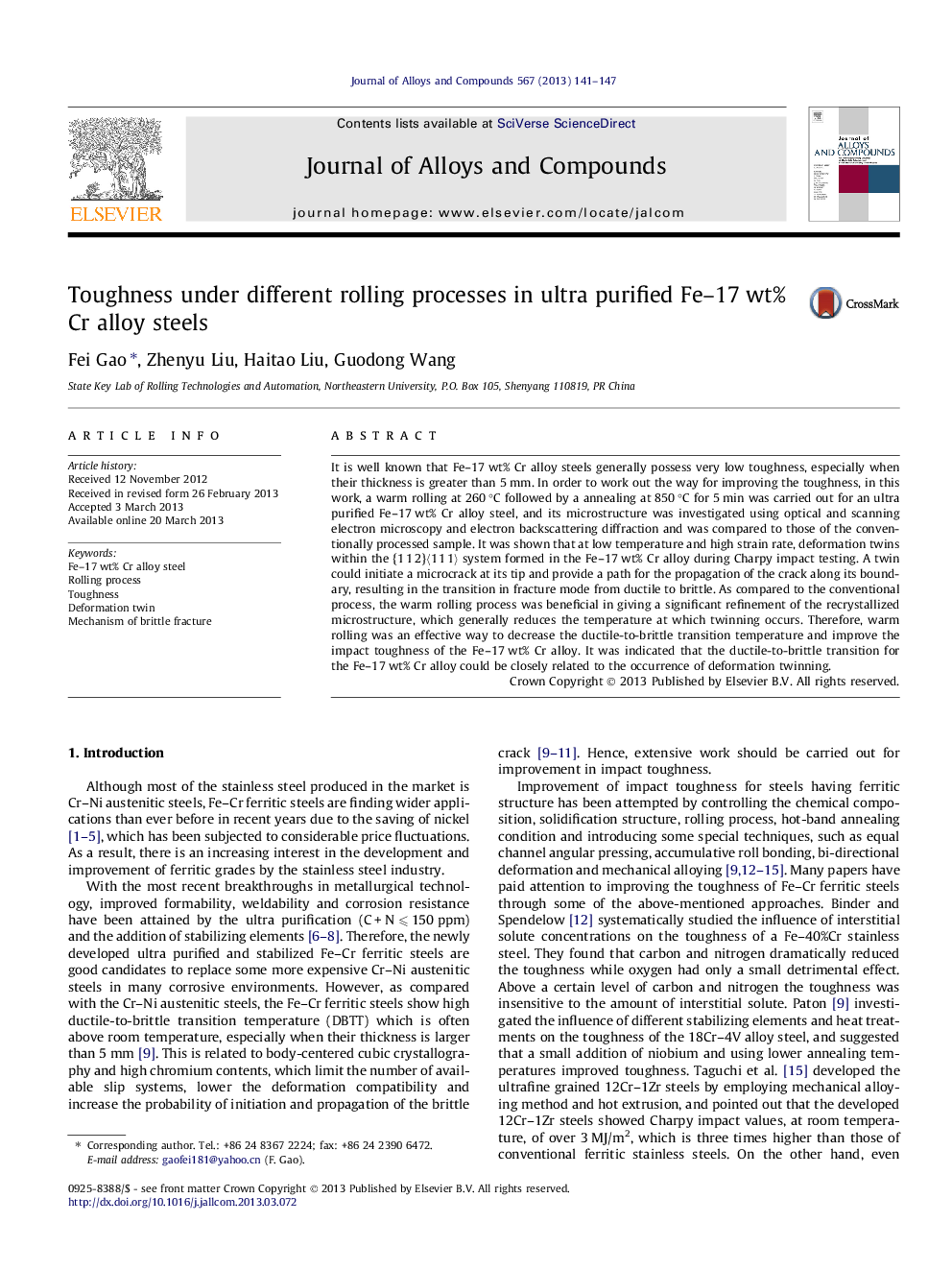| Article ID | Journal | Published Year | Pages | File Type |
|---|---|---|---|---|
| 1614157 | Journal of Alloys and Compounds | 2013 | 7 Pages |
Abstract
It is well known that Fe-17 wt% Cr alloy steels generally possess very low toughness, especially when their thickness is greater than 5 mm. In order to work out the way for improving the toughness, in this work, a warm rolling at 260 °C followed by a annealing at 850 °C for 5 min was carried out for an ultra purified Fe-17 wt% Cr alloy steel, and its microstructure was investigated using optical and scanning electron microscopy and electron backscattering diffraction and was compared to those of the conventionally processed sample. It was shown that at low temperature and high strain rate, deformation twins within the {1 1 2}ã1 1 1ã system formed in the Fe-17 wt% Cr alloy during Charpy impact testing. A twin could initiate a microcrack at its tip and provide a path for the propagation of the crack along its boundary, resulting in the transition in fracture mode from ductile to brittle. As compared to the conventional process, the warm rolling process was beneficial in giving a significant refinement of the recrystallized microstructure, which generally reduces the temperature at which twinning occurs. Therefore, warm rolling was an effective way to decrease the ductile-to-brittle transition temperature and improve the impact toughness of the Fe-17 wt% Cr alloy. It was indicated that the ductile-to-brittle transition for the Fe-17 wt% Cr alloy could be closely related to the occurrence of deformation twinning.
Related Topics
Physical Sciences and Engineering
Materials Science
Metals and Alloys
Authors
Fei Gao, Zhenyu Liu, Haitao Liu, Guodong Wang,
